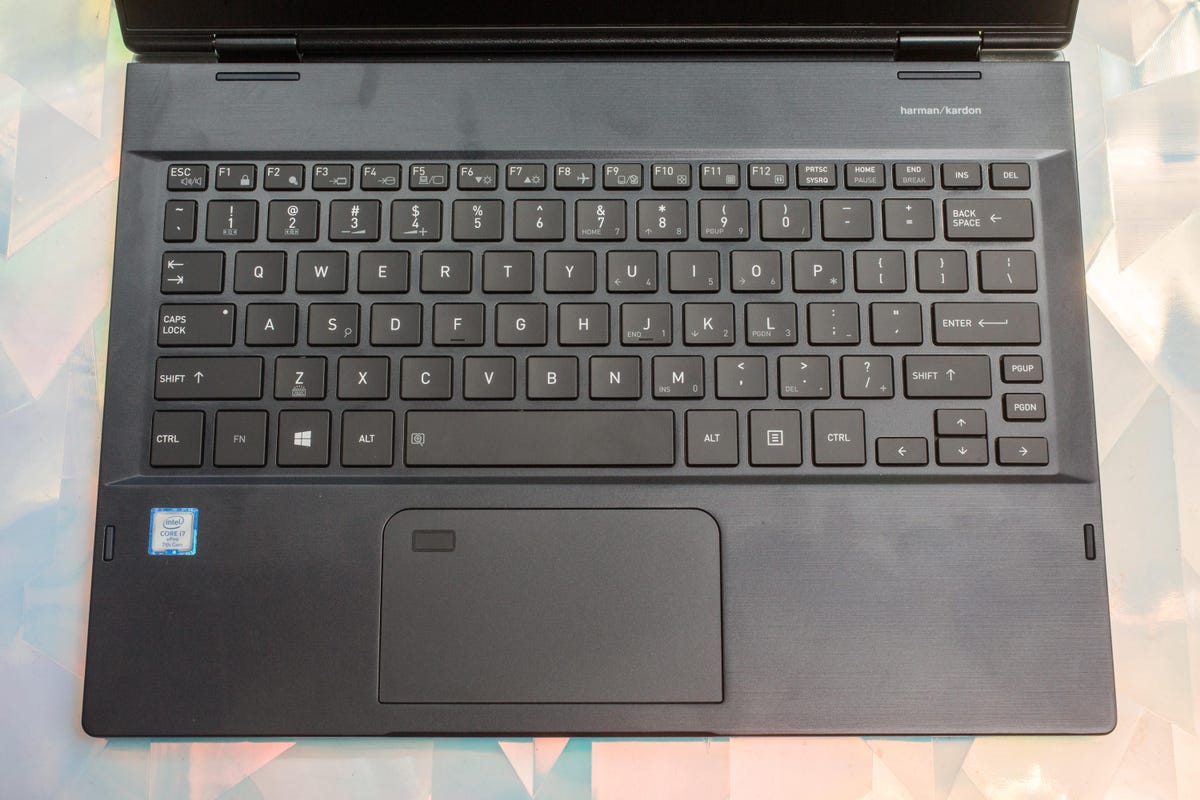Description
The Bad
The Bottom Line
The ultraportable 2-in-1 starts at $999, AU$2,145 or £1,399 in the UK and is available in several preassembled configurations. Or you can, at least in the US, configure one yourself to create a laptop like our review system, which hit $2,099. A better option, though, might be the similarly configured Signature Edition available through Microsoft for $1,500.
Regardless of what processor, memory and storage you go with though, all the base features and components are the same and result in an excellent, if slightly buttoned-up, tablet/laptop hybrid. And while it's aimed at business users, students might want to consider it, too, for its slim body and 2.4-pound weight (1.1 kg) as well as the included Wacom-powered TruPen active stylus.
The Portege X20W's dual-hinge design lets it smoothly switch from a laptop to a tablet.
The screen doesn't separate from the keyboard like the Dell Latitude 12 5000 Series 2-in-1's or the Microsoft Surface Pro's, but instead folds back like on a Lenovo X1 Yoga. This style of two-in-one can be a little awkward to use in tablet mode, but that's not the case here thanks to its light weight and not-too-big 12.5-inch 1,920x1,080-pixel display.
Built with Gorilla Glass for extra durability, the screen has an antiglare coating that actually works and, combined with the 350-nit brightness, you won't struggle so much to see this screen outdoors.
Toshiba Portege X20W-D
| Price as reviewed | 18000 |
|---|---|
| Display size/resolution | 12-inch, 1,920x1,280 touch display |
| PC CPU | 2.8GHz Intel Core i3-7600U |
| PC memory | 8GB DDR3 SDRAM 1,600MHz |
| Graphics | 128MB (dedicated) Intel HD Graphics 620 |
| Storage | 256GB M.2 PCIe SSD |
| Networking | 802.11ac wireless, Bluetooth 4.2 |
| Operating system | Windows 10 Pro (64-bit) |
You can, of course, use your fingers to navigate the touchscreen, but Toshiba includes its TruPen stylus with 2,048 levels of pressure sensitivity. Developed with help from industry leader Wacom, the pen has minimal lag that's probably still too much for a professional artist, but for rough sketches and scribbles during a brainstorming session or adding notes in the margins of a presentation it's plenty fast. The biggest downside: There's no place to store the pen.
While I like the screen and pen, I'm less a fan of the keyboard. There's not a lot of travel due in part to the shallow body, but the keys feel mushy as well and everything feels tiny and cramped.
The touchpad is on the small side, too, but at least it's responsive and the palm rejection worked very well. Plus, there's a fingerprint reader embedded in the top left corner for logging in with Windows Hello. (Toshiba also includes an IR camera above the display next to its 720p webcam if you'd rather use facial recognition to log in.)

Tiny laptop. Tiny keys.
Doing more with less
Like all really compact and thin laptops, the Portege X20W-D has a limited port assortment. In fact it has just two: a standard USB 3.0 and a USB 3.1 Type-C with Thunderbolt 3. There is a headphone/mic combo jack, but it has no direct video output, no Ethernet and no SD card slot. Making matters slightly worse is that the laptop charges through the Type-C port. That means you'll have to choose between power or using the port for something else.
Luckily, Toshiba includes an HDMI-to-Type-C adapter with an additional Type-C port on it, so at least you have one out-of-the-box option for simultaneous video out and power. It's just that if you want to go beyond that, say at an office desk, you'll have to invest in a dock of some sort, which


